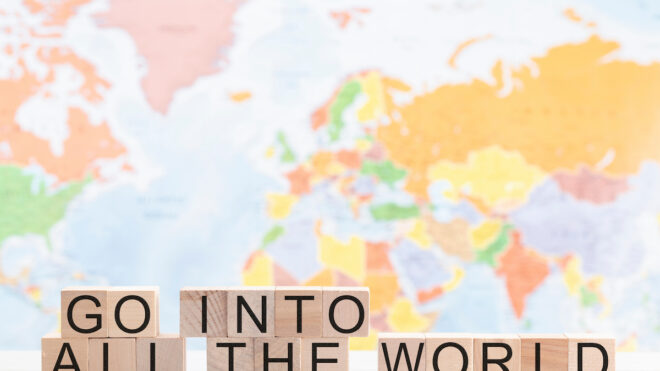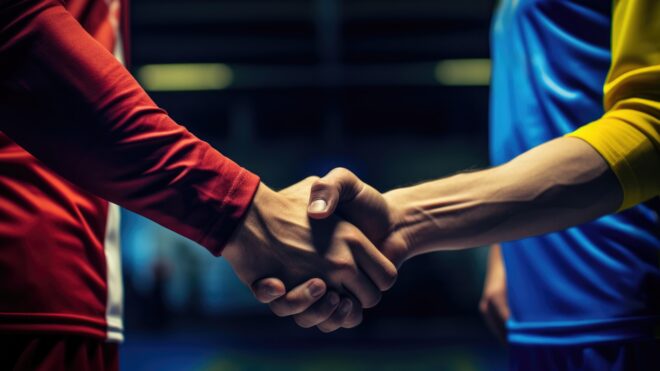Because Beijing, as the capital and second largest city, gets the most media attention, most people go there first. We made a point of going there last.
The first surprise is that the air there was the clearest we had run into in China, except for Yan’an! I guess the thick smog is a seasonal thing; it was June, and the smog season is the late fall and winter. The climate is similar to that of Omaha, Nebraska, but there is a lot less winter rain and snow. In June, however, we experienced some rain – for several days there was a thunderstorm every afternoon! The hills that are on the west side of the city could always be seen, and sometimes the mountains to the north. We got off the train and headed over to Tian’anmen Square, which required going through the sort of security characteristic of museums and airports, though plenty of tourists did, both domestic and foreign, and photographed themselves in the space. It is a large concrete space, and other than the big gate on the north side with the picture of Mao on it, it doesn’t look Chinese at all; it looks Russian, if anything. A couple of days later we came back and this time went through a second security barrier into the Mausoleum of Mao. Unlike Lenin, you do not have to descend as into a baptistery and then come back up. People do buy and leave flowers; as I explained in another post, the Chinese recognize that he was a bad guy but he restored the self respect of a great nation, and that covers a multitude of sins.
On another day we decided to go to the National Museum, which is right across the street from Tian’anmen. It was raining, as it tends to be around the world on days you go to museums, and we had to park the bus on the opposite side of the block and then go through security halfway around the block! No one was coming in from the front. At the door there was one door for Chinese citizens and another one for foreign citizens! Since our schedule was tight, we only saw an interesting travelogue painting of a Qing emperor’s journey to the south. It occurred to us later that it was June 4, the date of the Tian’anmen killings in 1989, a date that is not celebrated or recognized in any other way than by the tightening of security in that part of Beijing. [Remember our guide in Jinan, born in 1987, who wore a Statute of Liberty and American flag T-shirt, had never heard of the events of 1989, and had little desire to go to America!] Christina, David, and I did go back to the same museum on another day; the checkpoint halfway around the block had disappeared! This time we saw the downstairs, which is quite as informative about the history of artifacts as the provincial museums.
One area that we ended up visiting several times was 798 or Jiuxianqiao, the Arts District, which is well to the northeast of downtown and does not even have a metro line going to it. Like any “Arts District” it’s full of bars and restaurants and shops and some galleries but few real artists can afford to have studios there. There, also, I saw the only graffiti I saw in all of China! They looked like Western art-graffiti, and were not political. An American artist friend of Roberta’s, who lives in Beijing, has his studio in the middle of a hutong [older low-rise residential neighborhood] called Caochangdicun a little farther out. On the edge of the neighborhood are warehouse-like buildings that have become galleries, but the hutong itself has not been taken over by artists! Much farther to the east, where one could actually begin to see some fields, we got to visit the studio of artist Hai Bo. Some of his paintings were of his native Manchuria, which looks a lot like Iowa. Roberta was very happy.
Anther day we made the obligatory trip to the Great Wall. We did not go to the most popular place, closest to the city; we went to another place further east, which was still full of people. We parked, then walked through an area that had all kinds of shops and chain restaurants to a point where we could catch a tram car up to the Wall itself, which runs along a mountain ridge at this point; then we took about a half mile walk along the Wall itself, down and up. [I actually gave up and sat down while the others went up another high hill.] Every tongue could be heard there; forms of Chinese, British and American English, Spanish, Portuguese, European tongues; this is one place in China that is truly international. The day was so clear I could see the spires of the newer Beijing business district, which, as in Guangzhou, lies several miles away from the older city center.
Another day was devoted to the two Summer Palaces, in the western part of town where it starts to rise into the hills. We drove to a place where we could take a canal boat to the gate of the palace; we had to change boats to get onto the palace lake. As we approached the dock, we could see a full-size concrete model of a ship that was never meant to sail. Since the sack of 1860 there have not been many buildings there; we did climb up the steps to one Buddhist temple and back down, and then walked along a wooden covered arcade which is a half mile long and supposed to be the longest in the world. Overhead there was, every time we passed a wood beam, a romantic landscape painting. I marveled that they should leave such things outdoors; I was assured that the paintings had been repainted since the Cultural Revolution. We had lunch at a nearby hotel and then were driven to Yuanmingyuan, which is often called the Old Summer Palace though it is actually newer; here some ruins of the so-called “Western” palace built by the Qing in the eighteenth century can be seen. I describe this in greater detail in my post entitled “Dynasties“. Replicas of the Zodiac Heads have been put back in place; the originals are the subject of a rather boring Jackie Chan movie that I saw after I left China.
Another sight was fascinating from a theological point of view. We headed south from the center and paid admission to a huge park [the Chinese charge admission to most of their public parks, but don’t have the rigid security that they have for airports, train stations, and museums] then approached a hill or mound with a temple complex on it featuring a huge round tower, where we paid another fee to get in to that enclosure. This temple was neither Buddhist, Daoist, or Confucian. It was an imperial cultic site where until 1911 the emperor would ceremoniously go once a year to pray to Heaven [Tian] for the harvest. In the round tower [remember pagodas are square, so this isn’t a pagoda] there were no statues of gods, saints, or men, only a tablet with writing on it. We stood amazed that in the midst of a country filled with temples with statues of boddhisattvas and arhats and deities, here was an imperial cult temple to a High God who could not be pictured! On the north side of town there was a Temple of Earth, on the east a Temple of the Sun, on the west a Temple of the Moon; these no longer stand, but are commemorated by public parks including the sites.
Finally came the day of our departure and the breaking of the fellowship. We went out to the Capital Airport; Roberta and I and the Groens were on British Airways, with their generous first class baggage allowance; David and Thomas and Christina on the Chinese airline, which hit them for excess baggage. We who were taking British Airways to Zurich went ahead through security, but they caught up with us; but when they were not allowed into the same airline lounge we were using, it was time for the final separation. So it was that David, Christina, and Thomas went to Los Angeles, and the Groens, Roberta, and I to Zurich; and the great adventure ended.



